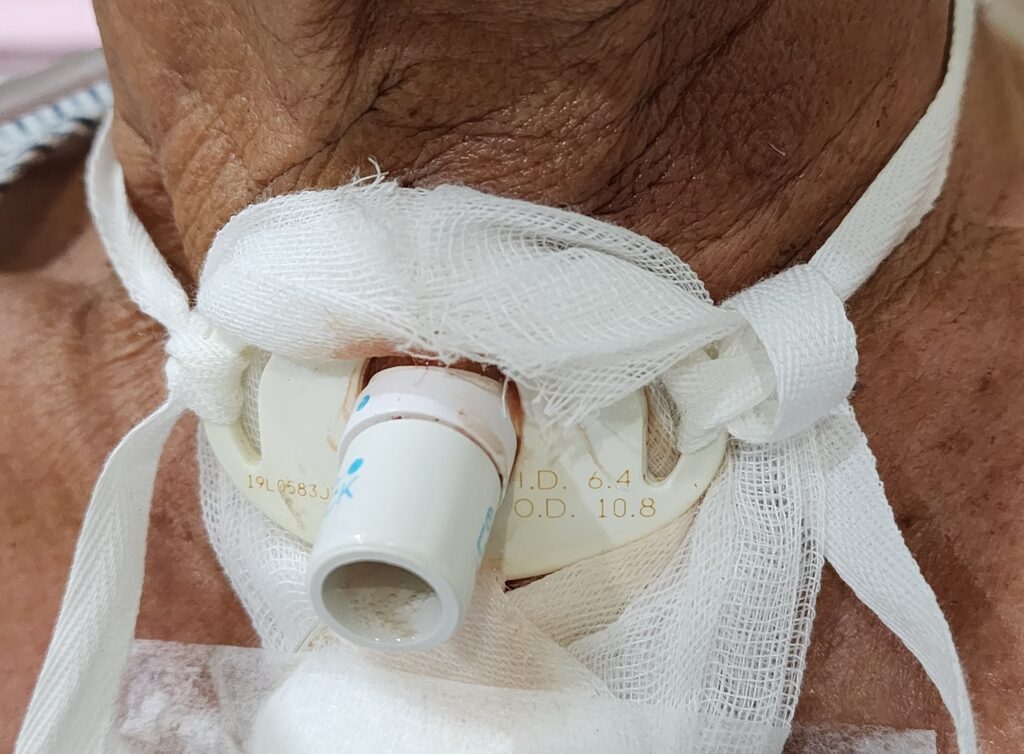A tracheostomy is a procedure where you put a hole (-stoma) into the windpipe (trachea). This procedure essentially transfers the breathing of the patient from the nose and mouth, to the front neck. This usually done when there is blockage of the airway, or a reduction in its function of the breathing pathway as will be explained in this article.
This is usually a planned procedure in most cases, but it could be an emergency procedure in some cases. This could also be temporary or permanent. This article will provide an overview of the procedure and the indications for doing this surgery.
Why is a tracheostomy usually done?
Most of the time, a tracheostomy is done on a patient who is hooked to a ventilator. After a few days of having a tube from the mouth to his lungs (endotracheal tube), the attending doctors will assess if the patient is able to tolerate removal of that tube and breathing on his own. However, if there is failure of weaning from the ventilator, tracheostomy is usually contemplated to facilitate ease of shifting from the ventilator to room air.

Another reason tracheostomy is done when the endotracheal tube has been placed for a while (usually, should not go beyond 2 weeks) is to prevent an unwanted sequelae of long term intubation which is subglottic stenosis, where a part of the airway under the Adam’s apple closes off due to prolonged friction.
Another indication for doing a tracheostomy is when a patient is in a coma, or has poor brain function resulting in an inability to cough out secretions (for example, stroke patients). These patients are unable to cough out secretions. This may in recurrent pneumonia, hence a tracheostomy tube is placed for ease of suctioning pulmonary secretions or pulmonary toilet. In addition, stroke patients may not be able to coordinate the swallowing process, resulting in aspiration of food into the lungs. Thus, a tracheostomy is done for protection of airway.
A tracheostomy may also be done as part of elective surgeries, such as a difficult reconstruction of multiple facial fractures. However, this is usually done as a last resort, only when alternating between nasotracheal and orotracheal intubation is not possible.
Tracheostomy and Other Surgeries
A tracheostomy may also be done for head and neck cancer cases. It may be done together with a thyroidectomy, when part of trachea has been eaten into by thyroid cancer. Your ENT doctor may also advice tracheostomy when handling laryngeal cancers blocking the airway. The tracheostomy is done after a biopsy of the vocal cord masses to protect from bleeding. It will also provide an adequate airway when swelling is expected during radiotherapy.

Large head and neck cancers of the nose and mouth compromise the upper airway, such as in nasopharyngeal, palatal, and tongue cases. Because the patient is not able to breath from the nose and mouth because of tumor blockage, this is bypassed by transferring the breathing to the neck with a tracheostomy.
Emergency Tracheostomy
While most tracheostomies are done as a planned procedure, emergency tracheostomies are sometimes done as well. (story: I had a very “toxic” residency training, somehow, emergency airway cases tend to come when I was on ER duty, dubbing me the “airway queen” by my co-residents)
Laryngeal cancer patients for whom a laryngeal biopsy with prophylactic tracheostomy was previously offered are common emergency surgeries. These patients are sometimes in denial of their disease, just rely on an oxygen tank at home. However, it comes to a point where they just come to the ER when they are out of breath and they are almost blue (cyanotic). This turns the tracheostomy into a life or death situation. What makes these procedures even more difficult is not only is the patient in respiratory distress, you also have to do the procedure while the patient is SITTING and AWAKE, as one cannot sedate the patient if no airway has been established.
Trauma cases with massive nose bleeding or mouth bleeding may also warrant a tracheostomy. This is done when everything has been exhausted to intubate the patient through the mouth. In emergency cases, a cricothyrotomy may be done, then shifted eventually to a tracheostomy procedure.
Experience expert ENT surgical care tailored to your needs.
Book now to schedule your appointment with a skilled ENT surgeon near you and take the first step towards a healthier you.
Your well-being is our top priority.

